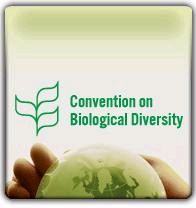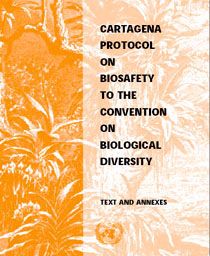Introduction
|
Convention on Biological Diversity Cartagena Protocol on Biosafety Genetically Modified Organisms (Control of Release) Ordinance
|
|||
|
Convention on Biological Diversity
The Convention on Biological Diversity (the Convention) is an international treaty on the conservation of biological diversity, the sustainable use of natural resources and the fair and equitable sharing of benefits deriving from the use of genetic resources. It was adopted at the 1992 Rio Earth Summit and came into operation in 1993. There are currently over 190 Parties to the Convention. China has been a Party to the Convention since 1993 and has been extended to Hong Kong since 2011. The Conference of the Parties (COP) is the governing body of the Convention, and advances implementation of the Convention through the decision it takes at its periodic meetings which are held every two years. The COP decisions can be found here. Text of the Convention can be downloaded from here. Biosafety (i.e. minimizing the risks from the possible adverse effects of modern biotechnology and its products on humans and the environment) is one of the issues addressed by the Convention. In January 2000, Parties to the Convention adopted the Cartagena Protocol on Biosafety (the Protocol) to provide for related matters concerning biosafety.
Cartagena Protocol on Biosafety
The Protocol is to provide for the safe transfer, handling and use of genetically modified organisms (GMOs) that may have adverse effects on the conservation and sustainable use of biological diversity. It requires Parties to take necessary and appropriate legal, administrative and other measures to ensure that the development, handling, transport, use, transfer and release, especially transboundary movement of, any GMOs are undertaken in a manner that prevents or reduces the adverse impacts of GMOs on the conservation and sustainable use of biological diversity. There are currently over 170 Parties to the Protocol and China is a Party to the Protocol since 1993. In addition to China, most of Hong Kong's trade partners such as Japan and the European Union have joined the Protocol. The Protocol was extended to Hong Kong since 2011. The Conference of the Parties serving as the meeting of the Parties to the Protocol (COP-MOP) meet every two years in conjunction with the regular meetings of the Conference of the Parties to the Convention. The decisions of the COP-MOP can be downloaded here. Text of the Protocol can be downloaded here.
The Genetically Modified Organisms (Control of Release) Ordinance The Genetically Modified Organisms (Control of Release) Ordinance, Cap.607 (the Ordinance, and its subsidiary legislation, the Genetically Modified Organisms (Documentation for Import and Export) Regulation, Cap 607A (the Regulation), commenced on 1 March 2011. The Ordinance and the Regulation give effect to the Protocol in Hong Kong and control the release into the environment and the transboundary movements of GMOs, and provide for related matters. The Ordinance establishes a mechanism for applying to the Agriculture, Fisheries and Conservation Department for prior approval of a GMO for release into the environment and requires that shipments containing GMOs, when being imported or exported, have to be accompanied by prescribed documents. Detailed introduction to the controls of the Ordinance could be found here.
|
|||
|
|||

